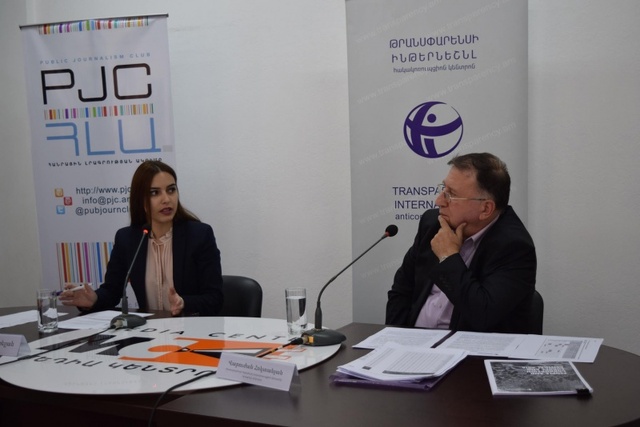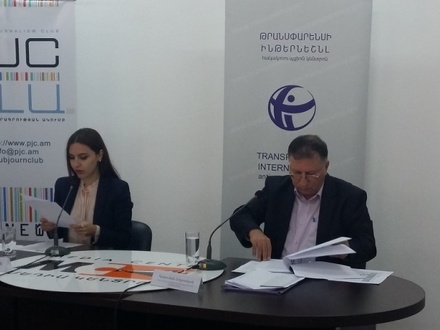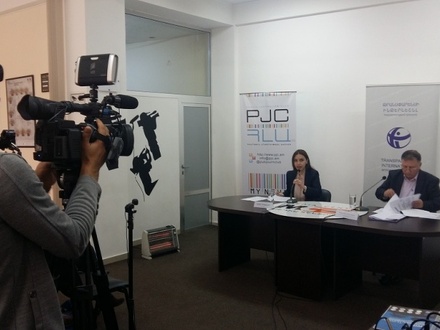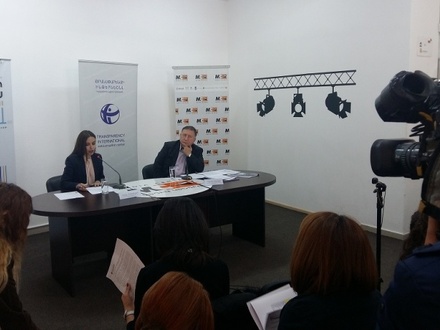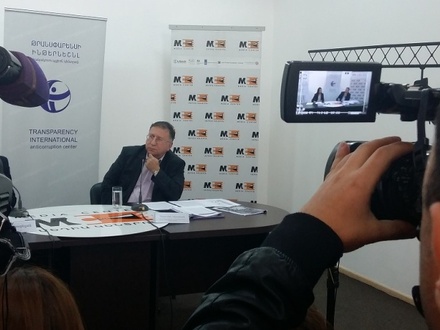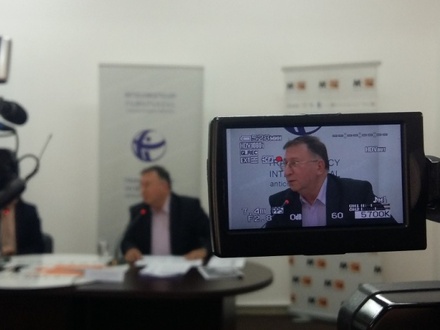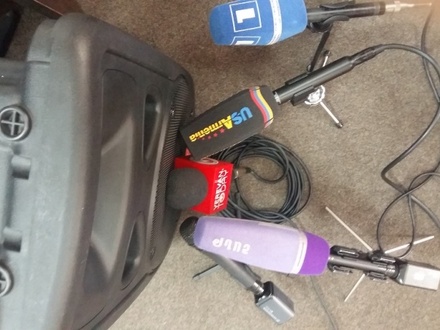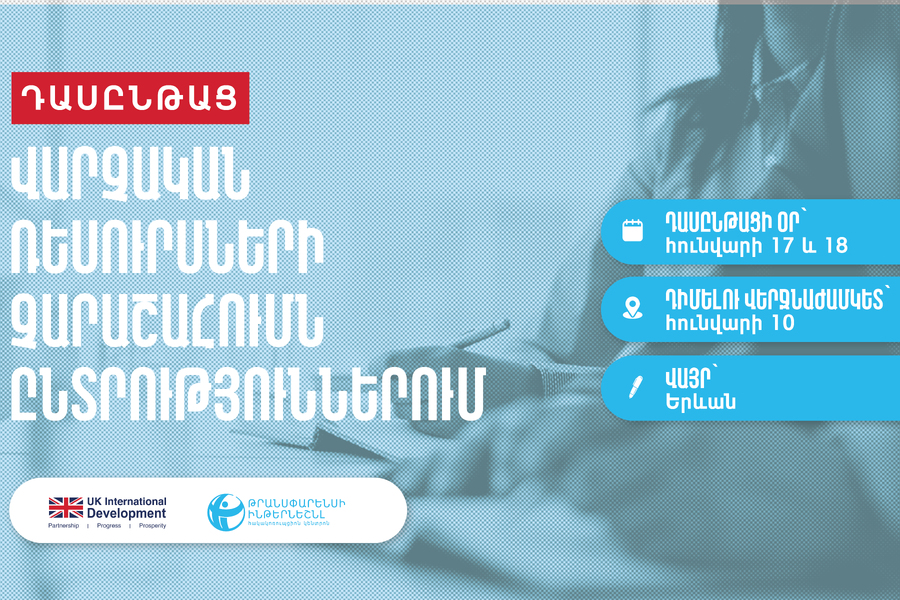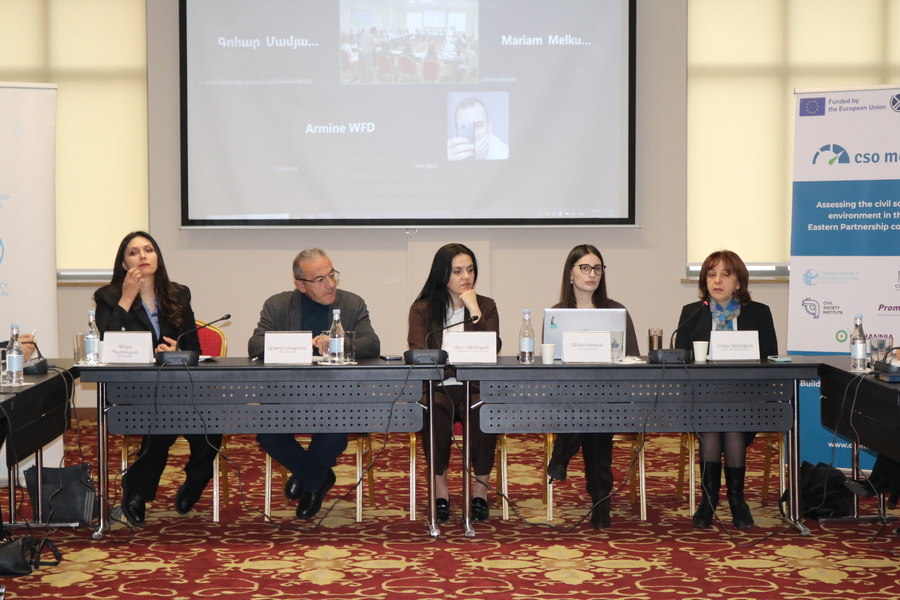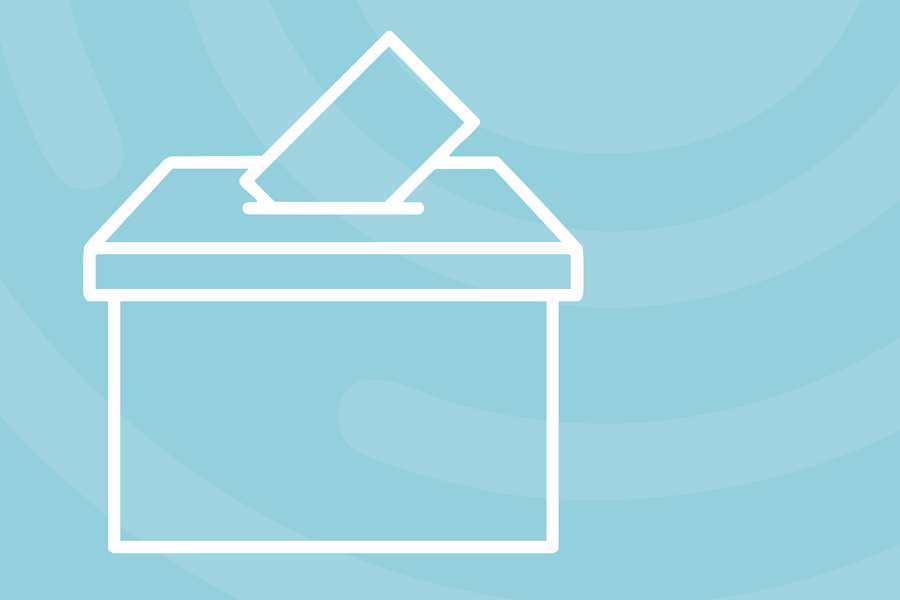Global Corruption Barometer 2016: the findings on Armenia and the region
A press conference was held on November 16, 2016 in Media Center to reveal the regional results of Global Corruption Barometer 2016. During the press conference Varuzhan Hoktanyan, Project Director of Transparency International Anticorruption Center (TIAC) presented the findings of latest Europe and Central Asia edition of the Global Corruption Barometer 2016, released by Transparency International, the global civil society organization leading the fight against corruption, including survey in Armenia.
Transparency International’s Global Corruption Barometer is a public opinion survey that offer views of the general public on corruption and its impact on their lives, including personal experience with bribes. For this Europe and Central Asia report, the results are based on the responses of 60,000 people in 42 countries/ territories. The previous edition was revealed in 2013.
Global Corruption Barometer 2016 Survey in Armenia
On behalf of Transparency International, the TNS Opinion research company carried out the GCB 2016 survey in Armenia from December 28, 2015 to May 2, 2016 (for more on GCB see the “Frequently asked questions” material at www.transparency.am). The sample size was 1,527 people (adults of 18 years and more age) and data were collected using face to face household interviews. Armenia is included in the GCB survey for the fourth time in sequence (the previous ones were on 2009, 2010 and 2013).
Most results on Armenia, most of the former Soviet republics and Turkey are summarized in the tables included in the package on GCB 2016 (see …). For more detail on GCB 2016 Europe and Central Asia report visit TI website at http://www.transparency.org/whatwedo/publication/7493
Major results of GCB 2016 for Armenia
- The steps taken by the Armenian government to handle the fight against corruption are rated fairly well or very well only by 14% of the respondents (in 2013 it was 21%), whereas 65% of the respondents rated those steps as very badly od fairly badly (in 2013 it was 53%).
- The respondents think that the most number of representatives involved in corruption are those representing the governmental institutions (45% of the respondents perceive that all or most of them are involved in corruption), President and his staff (44%) and tax officials (43%).
- 66% of the respondents think that the wealthy in Armenia have too much influence and only 26% think that they have no influence or limited influence.
- However, similar to 2013 this time also the most alarming numbers for Armenia are those, which relate to the willingness of the people to get involved in the fight against corruption and perception of their role in that fight. In particular, 63% of the Armenian respondents (the same number, as in 2013) think that ordinary people do not make difference in the fight against corruption. This is the lowest number among NIS countries and the second lowest in the region (lower rate was reported from Czech Republic – 64% and the same 63% - in Hungary). 52% of the respondents in Armenia think that the ordinary person cannot do anything to help combat corruption. This is the highest number across the region among 42 countries. The picture was the same in 2013, though with even higher number. Finally, 67% of Armenian respondents (the same as in 2013) will not be obliged to report about corruption, even if he/she will witness the act of corruption. This also the worst result among all 42 surveyed countries of the region. Fear of reprisal is the most frequently stated reason (41%) for not reporting. It is interesting to mention that in 2013 the most frequently stated by Armenian respondents reason for not reporting corruption was “Nothing will be done” response (68% - the highest in the region).
- Among other results of Armenia in GCB 2016 it should be mentioned 24% of the respondents said that they paid bribe to at least one of the 8 services mentioned in the corresponding question (in 2013 that number was 18% and for 12 services). Finally, 77% of the Armenian respondents stated that reporting corruption is socially not acceptable in his/her country. This is also the highest number among all 42 countries of the region.
See more information on TIAC website and on TI website.

